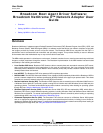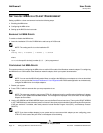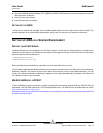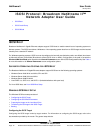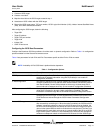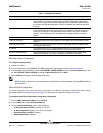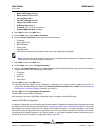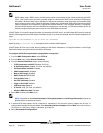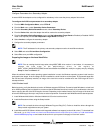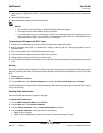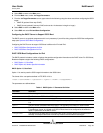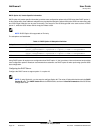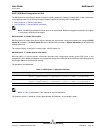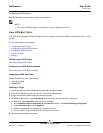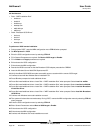
User Guide NetXtreme II
January 2010
Broadcom Corporation
Document ENGSRVT52-CDUM100-R iSCSI Boot Page 81
Configure Parameters for a Secondary Adapter
A second iSCSI boot adapter can be configured for redundancy in the event the primary adapter fails to boot.
To configure the iSCSI boot parameters for a secondary adapter
1. From the MBA Configuration Menu, select CTRL+K.
2. From the Main menu, select Secondary Device Parameters.
3. From the Secondary Device Parameters screen, select Secondary Device.
4. From the Device List, select the adapter that will be used as the secondary adapter.
5. From the Secondary Device Parameters screen, set Use Independent Target Portal to Enabled (or Disabled if MPIO
mode is not required) and set Use Independent Target Name to Enabled.
6. Select Invoke to configure the secondary adapter.
7. Configure the secondary adapter parameters.
NOTE: The IP addresses for the primary and secondary adapters must be in two different subnets.
8. Select ESC and select Exit and Save Configuration.
9. Select F4 to save your MBA configuration.
Preparing the Image on the Local Hard Drive
NOTE: Prior to creating the disk image when using KMDF VBD driver version 3.1 and above, it is necessary to
change the load order of the wdf01000.sys driver. In the registry at
HKEY_LOCAL_MACHINE\SYSTEM\CurrentControlSet\Services\Wdf0100, modify the registry entry by changing
Group to “base” and Start to “0”.
When the software initiator mode operating system installation is used, the Windows operating system install must be
performed in two stages. In the first stage, the OS is installed to a local hard drive on the system. In the second stage after
the OS has been completely installed, an image of the local drive must be transferred to the iSCSI target for use in
subsequent boots.
Initial Windows Install
Before beginning, verify that the desired version of Windows supports iSCSI boot. Proceed to install Windows to a local hard
drive. When partitioning the local hard drive, make sure that the Windows boot drive (normally C:) is partitioned to a size less
than or equal to the size of the iSCSI target to be used. Depending on the method used to copy an image of the local hard
drive to the iSCSI target, this may or may not be an actual requirement. Proceed to install Windows with the desired options.
1. Install Windows 2003 32-bit or Windows 2003 64-bit OS on the local hard drive.
2. Install the Broadcom drivers using the Setup installer.
NOTE: Do not install the drivers through Windows Plug-and-Play (PnP). Failure to install the drivers through the
Setup installer might blue screen your system.
3. Install Microsoft iSCSI Software Initiator with integrated software boot support (version 2.06 or later). To download from
Microsoft, go to http://www.microsoft.com/downloads/details.aspx?familyid=12cb3c1a-15d6-4585-b385-
befd1319f825&displaylang=en and locate the direct link for your system on the page’s “Overview” section.



